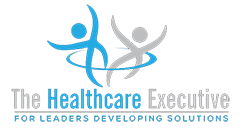Strategic Cost Containment in Healthcare: Navigating Economic Challenges in 2024

Strategic Cost Containment in Healthcare: Navigating Economic Challenges in 2024
Introduction
In 2024, healthcare executives face increasing pressure to manage costs while continuing to provide high-quality care. As resources become more constrained and patient demands evolve, strategic cost containment becomes crucial. This blog explores effective strategies that healthcare leaders can implement to balance cost control with excellent patient outcomes.
The Importance of Cost Containment
Cost containment in healthcare is essential not only for the financial sustainability of healthcare organizations but also for ensuring that care remains accessible to patients. Rising healthcare costs can lead to increased insurance premiums and out-of-pocket expenses, making care unaffordable for many.
Challenges in Cost Containment
- Rising Pharmaceutical Costs: The high cost of medications continues to be a significant challenge, especially with the introduction of advanced biologics and gene therapies.
- Labor Costs: As the demand for skilled healthcare professionals grows, so does the cost associated with recruiting and retaining talented staff.
- Technological Advancements: While technology can improve efficiency and patient outcomes, the upfront and maintenance costs are often substantial.
Strategies for Effective Cost Containment
Healthcare executives can adopt several strategies to manage costs effectively while maintaining or improving the quality of care:
- Efficiency Through Technology: Implement technology solutions that improve operational efficiency, such as electronic health records (EHRs) and telemedicine platforms. These technologies can reduce administrative costs and streamline patient care processes.
- Value-Based Care Models: Shift from fee-for-service to value-based care models, where providers are rewarded for the quality of care they provide rather than the quantity. This approach encourages cost-effective treatment plans and preventive care.
- Supply Chain Optimization: Review and optimize the supply chain for medical supplies and pharmaceuticals. This could involve negotiating better terms with suppliers, consolidating orders, or switching to less expensive alternatives that do not compromise quality.
- Preventive and Predictive Medicine: Invest in preventive care and predictive analytics to identify and manage diseases early, potentially reducing the need for expensive treatments later.
- Staff Training and Retention: Focus on training current staff to handle multiple roles and retain them by providing competitive wages and a positive working environment, reducing turnover-related costs.
- Outsourcing Non-Core Functions: Consider outsourcing non-core functions like laundry, cleaning, and certain administrative tasks to more cost-effective providers.
Conclusion
In 2024, strategic cost containment is critical for the sustainability of healthcare organizations. By implementing these strategies, healthcare executives can control costs without sacrificing the quality of care. This balance is essential for the long-term health of both the organization and the patients it serves.



